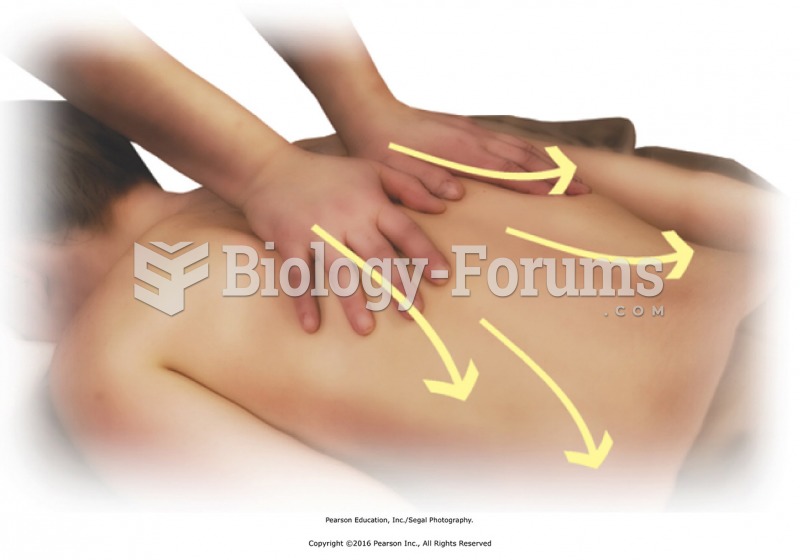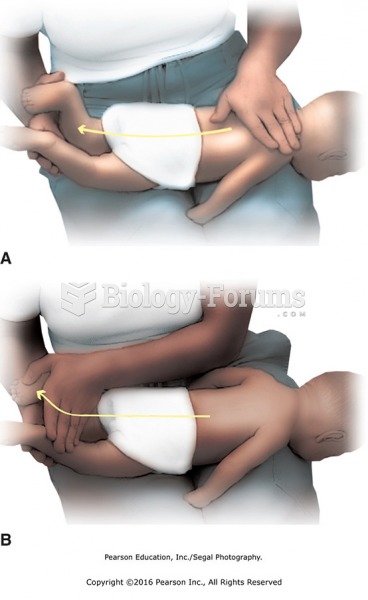This topic contains a solution. Click here to go to the answer
|
|
|
Did you know?
About 3% of all pregnant women will give birth to twins, which is an increase in rate of nearly 60% since the early 1980s.
Did you know?
Cytomegalovirus affects nearly the same amount of newborns every year as Down syndrome.
Did you know?
Many of the drugs used by neuroscientists are derived from toxic plants and venomous animals (such as snakes, spiders, snails, and puffer fish).
Did you know?
If you could remove all of your skin, it would weigh up to 5 pounds.
Did you know?
This year, an estimated 1.4 million Americans will have a new or recurrent heart attack.
 Standing at the head of the table, apply oil or lotion to the entire back with bilateral stroking. ...
Standing at the head of the table, apply oil or lotion to the entire back with bilateral stroking. ...
 Scoop from (A) shoulders to (B) heels. Hold feet in one hand; with other hand use the palm to apply ...
Scoop from (A) shoulders to (B) heels. Hold feet in one hand; with other hand use the palm to apply ...
 Apply light tapotement on the head. Tapping lightly with the fingertips works well for this purpose.
Apply light tapotement on the head. Tapping lightly with the fingertips works well for this purpose.




